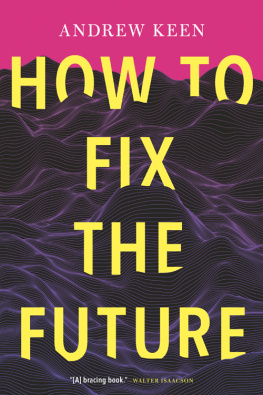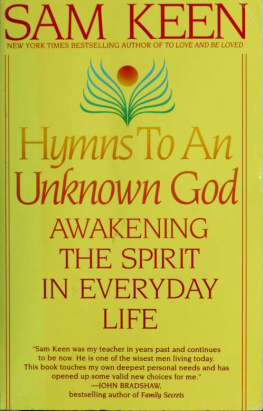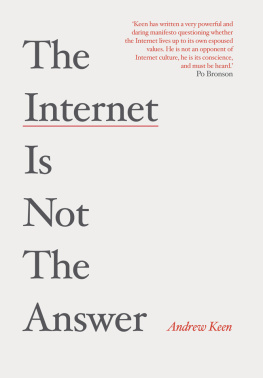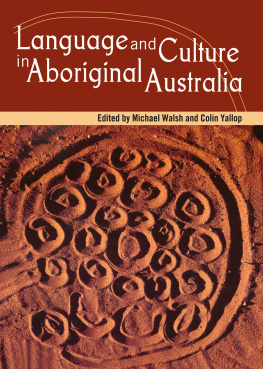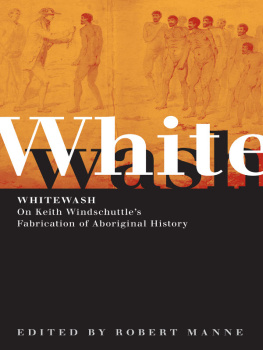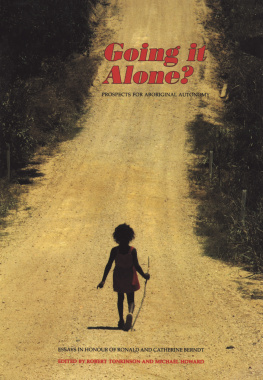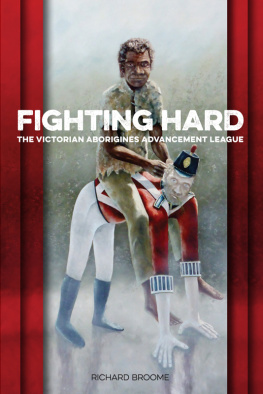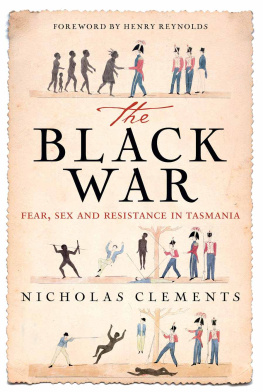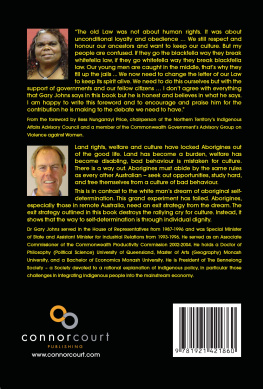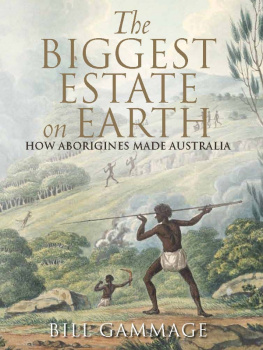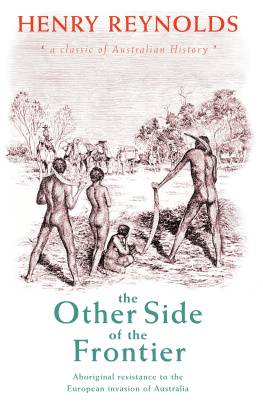Keen - Being black: Aboriginal culture in settled Australia
Here you can read online Keen - Being black: Aboriginal culture in settled Australia full text of the book (entire story) in english for free. Download pdf and epub, get meaning, cover and reviews about this ebook. City: Canberra, year: 1991;2011, publisher: Aboriginal Studies Press, genre: Politics. Description of the work, (preface) as well as reviews are available. Best literature library LitArk.com created for fans of good reading and offers a wide selection of genres:
Romance novel
Science fiction
Adventure
Detective
Science
History
Home and family
Prose
Art
Politics
Computer
Non-fiction
Religion
Business
Children
Humor
Choose a favorite category and find really read worthwhile books. Enjoy immersion in the world of imagination, feel the emotions of the characters or learn something new for yourself, make an fascinating discovery.
Being black: Aboriginal culture in settled Australia: summary, description and annotation
We offer to read an annotation, description, summary or preface (depends on what the author of the book "Being black: Aboriginal culture in settled Australia" wrote himself). If you haven't found the necessary information about the book — write in the comments, we will try to find it.
This volume brings together results of research by anthropologists on the social life of people who used to be labelled part-Aborigines or urban Aborigines. Issues discussed include bases of identity, ties of family, structure of community, ways of speaking, beliefs and feelings about country, and attitudes to the past.
Keen: author's other books
Who wrote Being black: Aboriginal culture in settled Australia? Find out the surname, the name of the author of the book and a list of all author's works by series.
Being black: Aboriginal culture in settled Australia — read online for free the complete book (whole text) full work
Below is the text of the book, divided by pages. System saving the place of the last page read, allows you to conveniently read the book "Being black: Aboriginal culture in settled Australia" online for free, without having to search again every time where you left off. Put a bookmark, and you can go to the page where you finished reading at any time.
Font size:
Interval:
Bookmark:

Kinship, mobility and community among Aborigines in the far west of New South Wales by Jeremy Beckett is reprinted with kind permission from the International Journal of Comparative Sociology.
What it means to be an Aborigine is reprinted from The Aborigine Today edited by Barbara Leach, published by Paul Hamlyn, 1971. I thank Dr Richard Barwick for permission to include Diane Barwicks paper.
I am grateful to Libby Keen for her editorial assistance, and Judy Bieg for her patience in typing the manuscript. Also, thanks to Heather MacDonald who prepared the index.
According to the perceptions of many people including anthropologists and other researchers, Aboriginal people of mixed descent, classified in earlier decades as part-Aborigines, have no distinctive culture (eg Bell 1964, 64; Barwick 1964; Beckett 1964; Rowley 1971; Hausfield 1977, 267; RM Berndt 1979, 87; and see Read 1980, 112). Fink (1957, 110), for example, has judged that the Aborigines of a New South Wales town simply possessed a common group identity as black and an opposition to white people, In Eckermanns view (1977), the Aboriginal people of a southeast Queensland town have been assimilated and integrated, having a mode of life typical of working class culture (see also Smith and Biddle 1972, xi). To the Berndts (1951, 275-76; Berndt 1962, 88), the Europeanisation of so small a minority has seemed inevitable.
In contrast, others (and sometimes the same authors writing at different times) have detected a distinctive, even unique, culture or way of life, with its own folkways, mores and beliefs (Calley 1956; Bell 1961, 436-37; Smith and Biddle 1972, 124; Howard 1979, 98; Crick 1981). Langton (1982, 18) has remarked that loss of culture should not be a matter of faith, but of investigation. Indeed, much of the substance of the publications cited above, as well as the results of current research, show that many features of the social life of these people are distinctive, and also display marked similarities to aspects of the cultures of Aboriginal peoples whose social lives have been changed to a lesser degree by the process of colonisation. Calley (1956, 213) wrote that the people of mixed Aboriginal descent possessed a society leaning heavily on the logic and outlook on life of the indigenous traditions, yet quite well adapted to the white community that surrounds it.
It was my familiarity with some ongoing anthropological research into the social life of Aboriginal people of southeast Queensland, New South Wales and the southwest of Western Australia, that led me to invite contributions to a volume on continuities in the culture of Aboriginal people living in what Rowley (1971, vii) called settled Australia. The closely settled regions, by contrast with what Rowley termed colonial Australia, dominated by pastoral production, are those which have been most radically transformed by people of European origin. They lie mainly in the southeastern and southwestern parts of the continent, extending on the east coast north to Cairns, and north to Carnarvon on the west coast. The category should also include Darwin, the major European and Asian settlement of the north.
This volume (Being Black), brings together some of the results of a continuing interest among anthropologists in the social life of people who used to be labelled part-Aborigines or urban Aborigines. Studies burgeoned during the post-war decades when acculturation was a major anthropological interest, although research dwindled somewhat through the 1970s. Meanwhile research by geographers and economists has greatly extended our knowledge of the social and economic conditions of Aborigines of these regions, and the new Aboriginal history has revolutionised our perceptions of Australian history. Aborigines themselves are increasingly writing (and making films and videos) about their own lives (eg Bropho 1980; Clare 1978; Davis and Hodge 1985; McLeod 1982; Miller 1985; Mum Shirl 1981; Pepper 1980; Perkins 1975; Rosser 1978; Simon 1978).
My purpose here is to set the themes of each chapter in this book within the broader context of studies of Aboriginal social life in settled Australia. The chapters describe many dimensions of the social life and culture of Aboriginal people living In southeast Queensland, New South Wales, Victoria, South Australia, the southwest of Western Australia, and the Darwin fringe. The majority present the results of recent research; however Diane Barwick and Jeremy Beckett kindly agreed to the reprinting of two of their early articles here, and I thank Marie Reay for contributing the Foreword. I am especially grateful to Richard Barwick for consenting to the inclusion of Diane Barwicks article. This book is dedicated to her memory.
Many of the papers In this volume speak of continuities among elements of the culture of Aboriginal people of settled Australia and of people more remote from the area of dense European settlement, implying the reproduction of some cultural forms from the pre-colonial era. Diane Barwick (Chapter 2) believes the Koori subculture to be compounded of indigenous and introduced traits, and points to the prohibition of close cousin marriage as well as certain beliefs as continuities from the past. On the other hand, practices such as modes of dress, certain patterns of speech and drinking habits were gained from European rural workers. Other features are typical of itinerant workers generally. Barry Morris (Chapter 3) takes a different view. With the increasing loss of conspicuous cultural forms such as ceremonies, Dhan-gadi culture in the assimilationist era was a culture of resistance in the context of manager-supervised institution, which attempted to Inculcate the values of the dominant society. Forms of resistance included the control of Information, Illegal drinking and gambling, and the establishment of fringe camps free from institutional control. The emergence of idioms of stigma in a New South Wales town (Julie Carter, Chapter 4) is, of course, a response to relations with non-Aborigines in Aboriginal identity formation. In Jerry Schwabs opinion (Chapter 5), such identity among Adelaide Aboriginal boys is more ambiguous than in pre-colonial Australia.
Other continuities are documented (or posited) by contributors here: between the forms and use of Aboriginal English on the one hand and indigenous languages on the other; in the extent and form of kin networks; in the structure of the exchange economy, into which money is assimilated; in the forms and contexts of swearing and fighting; In beliefs; and in attitudes to the past. However, our purpose is not simply to tally culture traits, but to describe the way of life of a particular category of peoplewhat being black is.
Aborigines in settled Australia form part of a distinct, though heterogeneous and loosely bounded ethnic category. In this volume Diane Barwick (Chapter 2) addresses the question of identity within a broad sketch of the social life of Aboriginal people in Victoria. The chapters by Barry Morris, Julie Carter and Jerry Schwab (Chapters 3, 4 and 5) outline social processes through which a distinct Aboriginal Identity has been formed and reproduced.
The categories Aborigine and Aboriginal arose, of course, through interaction with colonising peoples mainly from Europe (Crick 1981). In pre-colonial Australia, as now in areas more remote from European settlement, manifold ethnic categories divided the Aboriginal population according to criteria of language, locality and descent (Berndt 1961; Merlan 1981). People of mixed descent who are a part of settled Australia identify themselves variously as Aborigines, dark people, coloured or blacks, and employ labels with regional application such as Murri, Koori, and Nyungar, which mark internal divisions, and contrast with terms such as Gubba (white person). Markers like Wiradjuri or Gooreng Gooreng (tribe or language names) are more specific still.
Font size:
Interval:
Bookmark:
Similar books «Being black: Aboriginal culture in settled Australia»
Look at similar books to Being black: Aboriginal culture in settled Australia. We have selected literature similar in name and meaning in the hope of providing readers with more options to find new, interesting, not yet read works.
Discussion, reviews of the book Being black: Aboriginal culture in settled Australia and just readers' own opinions. Leave your comments, write what you think about the work, its meaning or the main characters. Specify what exactly you liked and what you didn't like, and why you think so.


